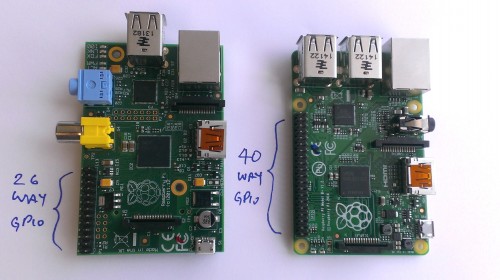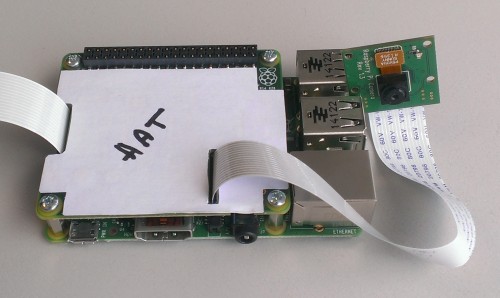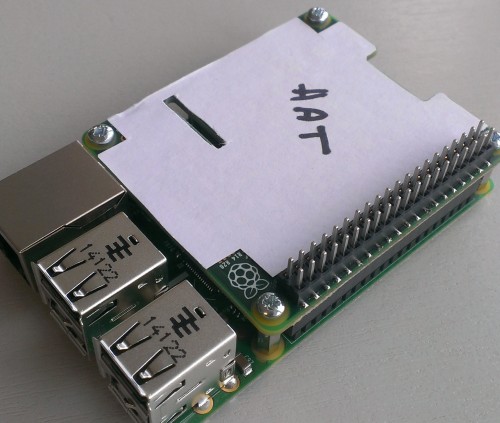|
Mainstream e-reader companies often do their product announcements in September and October. This year we are expecting new products from Amazon, Barnes and Noble, Icarus, Kobo, Pocketbook and Sony. What can we expect from these companies in terms of tech improvement and user experience? Amazon Amazon intends on releasing the 3rd generation Kindle Paperwhite and we can expect a ton of improvements. Techcrunch reported late last year that a prototype from Lab126 was floating around that had a 300 PPI screen, which should give us tremendous resolution. Amazon is also revising their default fonts, which should provide crystal clear clarity. The new Kindle is borrowing a page out of Kobos playbook with the screen being entirely flush with the bezel. This not only makes it easier to read with, but insures pinpoint accuracy with interacting with the touchscreen. The rear casing of the new Paperwhite will follow on with the industrial design of the current Kindle Fire HDX tablets, with a more angular shape and chamfer to the edges. Similar in look to the images of the HDX above. It will also feature a rear power button that looks similar to the new Kindle Fire tablets. I have heard credible rumors that the new Kindle will have an ambient light sensor. It will automatically adjust the frontlite, which allows you to read in the dark. The sensor will automatically adjust the screen brightness, similar to how Android performs these tasks on smartphones and tablets. Of course, Amazon intends on also announcing three new tablets, a low end Kindle Fire and more higher end 7 and 8.9 inch models. Sony Sony announced earlier today that they have officially discontinued the PRS-T3 e-reader, which is their latest version. It came out late last year and was notable for the higher resolution screen. Sony has abandoned their Reader Store, which has been around for over five years. Instead of dealing with publishers and selling books directly to customers they instead are using the Kobo ecosystem. Kobo is paying Sony a royalty for every book purchased on their e-readers, smartphones and tablets. Likely, Sony is working on a next generation e-reader that will not have Kobo branding on the box. Rumors circulated earlier in the year that Kobo and Sony were working on a co-branded e-reader, but now this is not the case. Instead, Sony will be releasing two versions of the PRS-T4. One for Canada, England, Europe and Australia, the second specifically for Japan. Japan is notable because the Reader Store is still alive and Sony wants to double down on that market. The other e-reader will have the Kobo app bundled on it and customers will be able to purchase eBooks that way. Sony tends to do very incremental updates to their e-readers and they have been steadfastly resistant to including any type of frontlight. Market research has led them to believe that this feature is not important to the average user and instead they can market their line of lighted cases or reading lights. I have heard reports that we will see Sony gravitate away from Neonode IR technology and will instead embrace capacitive touchscreen. Neonode will be having a conference call on August 5th 2014, where I will find out if Sony is still a customer. Barnes and Noble Barnes and Noble has confirmed that they have teamed up with Samsung for two new Nook Tablets. Samsung Galaxy for Nook will be a customized solution with Samsung providing the hardware and Barnes and Noble developing the custom software. I have seen some preview images of the new devices from a source and it looks really great. It is a stark departure from previous versions of the heavily skinned Android OS. Fresh, Modern and compelling are three terms heavily batted internally. They intend on having some sort of formal announcement in the first few weeks of August with a US and UK launch in September. There is currently no word on what they are doing with the Nook Glowlight, or if they are developing a next generation model. Likely, they will still market the Nook for another year and issue two new tablets, which is a gateway to their videos, magazines, newspapers and enhanced kids books. A dedicated e-ink reader does not really make a whole lot of revenue. Kobo Nothing I can disclose right now, but look for more information out at the end of next month. Icarus Icarus is refreshing their 6 inch Illumina and 9.7 inch Excel with more or less the same hardware, but instead are embracing the Open Android ecosystem. Instead of having a locked down version like Sony or Nook they are allowing customers to load in their own apps on pure e-Ink device. This will open up a wide realm of possible installs. One of the benefits Icarus has in this regard is a more modern version of Android OS, with version 4.2.2. Pocketbook Pocketbook has quietly pushed back the launch of their large screen CAD e-reader that is geared towards business. They are revising the screen technology and going with the more lightweight Mobius, as found on the Sony Digital Paper. There are two e-readers that are on the cusp of being available. The Pocketbook Aqua, which is the first certified waterproof e-reader. It will last under six feet of water more or less indefinitely. They also have the ULTRA coming out soon, which has a camera built into it, and was designed with scanlation in mind. All the Others Wexler had a great deal of success with their FLEX One e-reader that featured a flexible LG e-paper screen. The company has confirmed they are developing a next gen model, but few details are available. IMCOSYS has announced they have a next generation imcoV6L in the works, it failed to get FCC certification and was never available in North America. Details are scant on exactly what will go into this new model, but more should surface in the next month. ONYX Boox has failed hard in 2014 with its INKPHONE, which doesn’t make phone calls because they failed to reserve IMEI numbers. Their Onyx LYNX and 9.7 inch model but have open Android 2.3, which makes it incompatible with the vast majority of e-reading apps. This company has continued to make super shabby products and I would not be surprised if they want bankrupt. What New e-readers Will Come Out Late 2014? is a post from: Good e-Reader |
A Semi-automated Technology Roundup Provided by Linebaugh Public Library IT Staff | techblog.linebaugh.org
Thursday, July 31, 2014
What New e-readers Will Come Out Late 2014?
Android Represents 85% of the Smartphones Shipped in Q2
|
Strategy Analytics has shared their research on global smartphone shipments in the second quarter of 2014, and the news is good for Android (but not so much for Apple). While overall shipments of smartphones grew by 27% (moving from 233M units in Q2 2013 to 295.2M units in Q2 2014), Android now enjoys having 85% of the total market share. Of course, it could be worse… Microsoft dropped down to only 8% of the smartphone market share while BlackBerry circles the drain at 1.9%. Details in the report also indicate that overall, fewer smartphones are being sold, regardless of platform. There are several speculations as to the reason, ranging from less disposable income to market saturation. Whatever the reason, the next quarter report should be interesting. Microsoft has moved to make Windows Phone free to license, Android One should push low cost Android phones in massive quantities, and Apple is expected to release a much-anticipated iPhone 6.
Android Represents 85% of the Smartphones Shipped in Q2 is a post from: Good e-Reader |
Sony PRS-T3 e-Reader is now Discontinued
|
Sony Canada has confirmed with Good e-Reader that the Sony PRS-T3 is officially discontinued. It will no longer be available in retail settings once current stocks have depleted. Not only is it no longer available in Canada, but Sony Europe also confirmed its discontinued. The PRS-T3 was one of the best e-readers Sony ever produced. It was durable, had great resolution and the ability to read eBooks you borrowed from the library. One of the downsides of this model was the built in case that added to the bulk. You are actually unable to remove it, without the battery and motherboard being visible. The Sony PRS-T3S actually solved this issue by having the standard backplate, and this model is actually still available in limited quantities. 2014 was a big year for change in the Sony e-reader division. The company closed down their Reader Store in Canada, Europe and Australia. All digital books and customers were passed over to Kobo, where a recent firmware update allows you to buy books again, but not through Sony. Is the discontinuation of the Sony PRS-T3 a sign that the company will announce a new model in September? This is the time of year they generally have new products come out, but without a dedicated eBook store, is e-readers still viable for Sony? Sony PRS-T3 e-Reader is now Discontinued is a post from: Good e-Reader |
Creating Smart Playlists in iTunes
| Smart Playlists are easy to create, and they automatically stay updated. Best of all, you can use them to ensure that your favorite music is always synced with your mobile devices. |
URL: http://blog.gcflearnfree.org/2014/07/31/creating-smart-playlists-in-itunes/
Introducing Raspberry Pi HATs
| Just over two weeks ago, we announced the new Raspberry Pi B+ with immediate availability. We’ve been very pleased at the response from the community and press about the B+, and most people seem to appreciate why we decided to evolve the Model B in the way we did – lots of you have been in touch to tell us how much you’re enjoying your new B+. There are many great new features built into the B+, but today we want to talk about one new feature we are particularly excited about. One of the brilliant things about the Raspberry Pi has always been the ability to attach physical hardware to the Raspberry Pi’s GPIO (General Purpose Input/Output) connector. There are so many third party add-on boards that attach to the raspberry Pi and extend its functionality: motor controllers, LEDs, buttons, sensors, microcontrollers, LCDs, ADCs and DACs; you name it, someone has almost certainly created an add-on board that makes it usable with the Raspberry Pi. On the Raspberry Pi models A and B, the GPIO connector has 26 pins. Users attaching an add-board to the model A or B Pi usually have to work out which drivers are required for their specific board, and then edit the relevant Linux files to make them load at boot time before the board is usable (or load them by hand from the command line). The Raspberry Pi has no knowledge of whether it has a board attached or not, and the various drivers, when loaded, will simply assume that they can make exclusive use of the GPIO interface. Most of the time this all works OK, but it can be a bit challenging for new users. Linux drivers blindly assuming GPIO pins are available can also occasionally cause confusion. The Raspberry Pi B+ has been designed specifically with add-on boards in mind and today we are introducing ‘HATs’ (Hardware Attached on Top). A HAT is an add-on board for B+ that conforms to a specific set of rules that will make life easier for users. A significant feature of HATs is the inclusion of a system that allows the B+ to identify a connected HAT and automatically congifure the GPIOs and drivers for the board, making life for the end user much easier! Before we go any further, it is worth noting that there are obviously a lot of add-on boards designed for the original model A and B boards (which interface to the original 26 way GPIO header). The first 26 pins of the B+ GPIO header are identical to those of the original models, so most existing boards will still work. We are not breaking compatibility for existing boards; we’re creating a specification that B+ add-on board designers can follow (if they so wish), which is designed to make end users’ lives much easier. So what is a HAT? In a nutshell a HAT is a rectangular board (65x56mm) that has four mounting holes in the (nicely rounded) corners that align with the mounting holes on the B+, has a 40W GPIO header and supports the special autoconfiguration system that allows automatic GPIO setup and driver setup. The automatic configuration is achieved using 2 dedicated pins (ID_SD and ID_SC) on the 40W B+ GPIO header that are reserved for an I2C EEPROM. The EEPROM holds the board manufacturer information, GPIO setup and a thing called a ‘device tree‘ fragment – basically a description of the attached hardware that allows Linux to automatically load the required drivers. What we are not doing with HATs is forcing people to adopt our specification. But you can only call something a HAT if it follows the spec. So why are we bothering with all this? Basically, we want to ensure consistency and compatibility with future add-on boards, and to allow a much better end-user experience, especially for less technically aware users. The HAT specification is available on GitHub for those wishing to design add-on boards for the B+. As previously explained, there is no requirement to follow the HAT specification, but we encourage people to think about following it if possible, as it will make the world a better place for end users. One final bit of good news: we have used a surface mount connector on our internal prototype HAT which works very nicely. As you can see from the pictures it solders to the top of the board and then fits over an extension header (the extension header pins push through the HAT from underneath). As the extension headers push through like this it is possible to either use a short, flush mounting extension or a version with longer pins that poke out above the HAT and allow further access to the GPIO pins for debugging. For HAT designers wanting to use these connectors, we have secured discounted pricing through Toby Electronics. The connector part numbers are:
Toby tell us they are getting stock in now, which should arrive for the 5th August. Please post technical questions about the specification to the forum. |
Chinese Digital Publishing Industry Valued at $56 Billion
|
The Chinese digital publishing industry is on the rise. Newspapers, magazines, comics and eBooks garnered 42 billion USD in 2012. This is a massive figure, but it only really accounted for 11.6% of the entire publishing industry. Chinese digital publishing has really grown up over the last two years with more companies focusing on smartphone delivery. New research has proclaimed that by the end of 2014, digital publishing will be valued at over 56 billion. The Chinese digital publishing industry is targeting smartphones in a big way. There is currently 700 million active phones running Android, Windows or iOS. This is prompting creative deals such as Xiamen Bluebird Cartoon Co. partnering with Trajectory to adopt its popular TV series Xingxing Fox and Close to the Great Society into digital books for children. One of the largest digital publishing websites is run by Cloudary, a website dedicated to contemporary Chinese literature. They provide a wide range of digital services, such as online eBook delivery and they also manage six online reading and writing communities, with a user popular of 1.6 million members. The thing I really like about the Chinese publishing industry is how innovative they are when compared to the way the North American scene is run. One of China’s oldest publishing houses, Zhonghua Book Co, entered the world of multimedia publishing by instigating a poetry contest that targeted mobile phone users. The format was simple: Applicants simply had to compose an ode using the rigid formulas of classical Chinese poetry and send the resulting poem to Zhonghua via a text message. Over a period of four months, 43 million aspiring poets texted their work, either as original content for the competition or as messages to friends, who in turn forwarded the poem to other recipients. By the end of the competition, the number of posts and reposts on mobile devices totaled 129 million, a huge number given that Zhonghua’s biggest-selling physical book, Thoughts on the Analects of Confucius sold 320,000 copies. There are thousands of startups tackling app development, new content delivery methods and cool ways to appeal to the mobile reader. All of this innovation is occurring due to Amazon, Apple and Google entering the market and fostering innovation. This is ruffling some political feathers, which prompted the Chinese Central Government to issue a series of guidelines to help traditional publishing enter the digital world and offered financial assistance to make it happen. China has a very deep rooted publishing industry and many are resistant about going digital. The average customer does not have a Android, Apple or iOS smartphone due to the costs and still rely on tangible books. The lack of technology is certainly the largest barrier, preventing the industry from reaching new heights. Still, 56 billion US is a ton of money and it is showing that customers are firmly embracing a wide array of media content and publishers are being savvy. Chinese Digital Publishing Industry Valued at $56 Billion is a post from: Good e-Reader |






